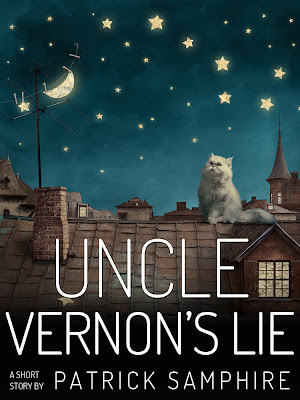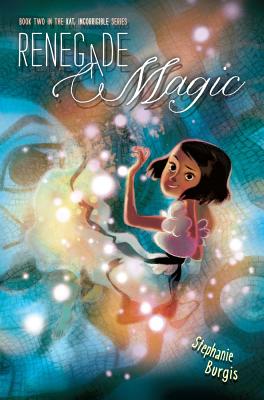Okay, so yesterday, when I wrote my blog entry "Seven Tips for Designing an Ebook Cover", I foolishly promised that today I would post the covers that I had done so far, so that you could all jeer and shout about how I shouldn't give advice if I couldn't design... Not that any of you are that mean, of course. But feel free to think it...
I was kind of hoping that I would also get the ebooks up on Amazon today, but I'm still finishing off the last one, then I have to figure out how to upload them to Amazon (I'm new to this!), so I expect it'll happen over the weekend.
Anyway! Enough blathering. Here are the covers I've done so far. The first one is for a collection of nine of my short stories. Eight have been previously published. One is an original.
The next six are all individual short stories. (All previously published). Here are the covers:
Three of these stories (At the Gates, Finisterre and Camelot) are a little similar in terms of style, and so I've tried to brand them using the same fonts and similar styles of art.
Most of the covers use the 'find good stock art and add text' school of cover design (highly recommended!)
One of them (Crab Apple) is my attempt to design a cover without using any stock art at all. I've only used photoshop brushes and shapes to make the illustration. I can't imagine I'll do that very often, as I'm definitely not an artist.
So, that's it. Feel free to shout at me in the silence of your minds. :)
Thursday 29 March 2012
Ebook covers
Wednesday 28 March 2012
Seven Tips for Designing an Ebook Cover
It's taken me a long time to get around to it, but I've finally decided to make all of my previously published short stories available as ebooks. Yeah, yeah, I know I'm way behind on this, but at least I'm getting around to it at last.
Because I'm a designer, I decided that I would design the covers myself. (And because I'm a web designer, and because ebooks are basically web pages, with a few peculiarities and limitations, I've also decided to do all the creating of the ebooks myself, but that's a topic for another day.)
So today I thought I'd share some observations and tips about designing an ebook cover.
Your book cover has two jobs:
Your first priority should always be to find a picture that feels like your story and which has an immediate grab-factor. Don't be too literal when searching for your stock art.
Here's an example. This is one of the covers I'm working on (I promise I won't fill this blog entry with my covers as examples!):
There is certainly no cat in this story (sorry to cat lovers!). But the illustration does represent the kind of magic in this story, and there is a scene at night with the boy and his uncle looking at the stars. It's a representative cover, not a strictly accurate one.
Traditionally published books are far less reliant on online stores. They have bookstores where their full-sized covers can be admired.
Check your cover at a width of 100px. If it doesn't work there, think again.
Compositing photos, particularly if you've first had to extract part of one image from a background, is really, really hard to do well enough. Even some commercial covers suffer from bad attempts at this.
Find a single piece of art or photo that works and use that.
Look at any commercially-designed book cover and you'll notice one particular thing: there is plenty of space for text: the author's name, the book title, maybe quotes and a tag. The image (or the high impact part of the image, anyway), only fills part of the cover. Space has been deliberately left for the text.
Look at this cover:
There's a large white space at the bottom for the text. Or, more extreme:
Even where text is placed across an image, it should be over the least "busy" part of the image, as with this example:
Now, traditionally-published books have a big advantage: they generally commission original art or photography, or, where they use stock imagery, they generally use it to make a more complex piece. Unless you're an artist or a photoshop master, you don't really have that option. You need to use stock art, and stock art is not generally composed with book covers in mind; there is rarely space for text.
You have three options:
In many cases, though, you won't need them at all.
Avoid fonts that are quirky, as well as handwriting or calligraphic fonts, unless you really know what you're doing. They are hard to work with. Look for something simple and elegant.
If all else fails, use Trajan Pro. It's clean, works beautifully at a large size, and it looks classy and professional.
Okay, those are my tips so far. As always, there are exceptions to every rule, and an experienced designer can ignore any or all at will.
Update: Actually, that was eight tips. I may have studied higher mathematics, but I still can't count...
If you're interested in my ebook design services, you can see my portfolio and rates on my ebook design website.
Because I'm a designer, I decided that I would design the covers myself. (And because I'm a web designer, and because ebooks are basically web pages, with a few peculiarities and limitations, I've also decided to do all the creating of the ebooks myself, but that's a topic for another day.)
So today I thought I'd share some observations and tips about designing an ebook cover.
Your cover is a not an illustration of a scene from your book
And it doesn't have to show the characters in your book accurately.Your book cover has two jobs:
- To represent the type of book it is.
- To grab the attention of a potential reader.
Your first priority should always be to find a picture that feels like your story and which has an immediate grab-factor. Don't be too literal when searching for your stock art.
Here's an example. This is one of the covers I'm working on (I promise I won't fill this blog entry with my covers as examples!):
There is certainly no cat in this story (sorry to cat lovers!). But the illustration does represent the kind of magic in this story, and there is a scene at night with the boy and his uncle looking at the stars. It's a representative cover, not a strictly accurate one.
Avoid generic photos
It's really easy to find beautiful pictures of scenery (woodland, or impressive buildings, or stuff like that), but these rarely work as covers. They just don't jump out when a potential reader is skimming past, and they don't say anything about your book. Look for something unique and simple that stands out.I may be tiny, but I'm still cute
Thumbnails rule the world. If you're self-publishing an ebook, you are massively reliant on your cover being noticed on an online store. That means a thumbnail image on a search screen. You're talking about something maybe 100 by 160 pixels (or smaller, on something like the 'Customers who Bought This...' section). If your cover doesn't stand out or is difficult to figure out at that size, you won't be noticed.Traditionally published books are far less reliant on online stores. They have bookstores where their full-sized covers can be admired.
Check your cover at a width of 100px. If it doesn't work there, think again.
Don't attempt to composit multiple photos into a single image
Unless you're a Photoshop professional (and by this I mean someone who uses Photoshop to make a living, every day; using Photoshop at home or occasionally at work doesn't count), then don't attempt to make an image using multiple source photos. It will look bad, and it will be obvious.Compositing photos, particularly if you've first had to extract part of one image from a background, is really, really hard to do well enough. Even some commercial covers suffer from bad attempts at this.
Find a single piece of art or photo that works and use that.
You need space for text
This is a mistake I made on my first few covers.Look at any commercially-designed book cover and you'll notice one particular thing: there is plenty of space for text: the author's name, the book title, maybe quotes and a tag. The image (or the high impact part of the image, anyway), only fills part of the cover. Space has been deliberately left for the text.
Look at this cover:
There's a large white space at the bottom for the text. Or, more extreme:
Even where text is placed across an image, it should be over the least "busy" part of the image, as with this example:
Now, traditionally-published books have a big advantage: they generally commission original art or photography, or, where they use stock imagery, they generally use it to make a more complex piece. Unless you're an artist or a photoshop master, you don't really have that option. You need to use stock art, and stock art is not generally composed with book covers in mind; there is rarely space for text.
You have three options:
- Keep looking until you find stock art that does leave space for text and fits.
- Make room for text. Generally by extending the canvas to create space at the top or bottom (or, sometimes, the sides) as I did on my ebook cover above.
- Put the text over the image.
This third option is almost certainly the hardest, and if the image is complex, you're going to be almost out of luck. Which brings me to:
How to do text...
There are two things that, more than anything else, make an amateur cover stand out from a professionally-designed one. The first one, as I mentioned, is a botched attempt at compositing images. The second is the way the text looks on the cover.
Text is tough to do. You wouldn't think it would be, but it is. It's probably the hardest part of any design you do. The text has to stand out and be readable, ideally even at thumbnail size, but it also needs to be an integral part of the design; it's part of the artwork itself.
The key is simplicity. If you're using photoshop, or a similar program, you will be given a whole host of ways of manipulating it. Resist!
The more effects that you add to the text, the less it will feel like it's part of the cover, and the more amateurish it will seem.
- Flee for your life from the temptation to use satin, bevel and emboss effects.
- Be very cautious about using gradient or pattern overlays, inner glows and inner shadows.
The three effects you should familiarize yourself with are drop shadows, stroke, and outer glow. They can add life to your text without making it look like a horrible alien explosion on your cover.
But if you do use them, use them subtly. Don't go over the top. In most cases, someone giving your cover a casual glance shouldn't even notice they are there. They should be working in the background, almost invisible.
 |
| Someone Else's Fairytale uses drop shadows to help the text stand out from a complex image (as well as adding semi-transparent colors as backgrounds to the text) |
In many cases, though, you won't need them at all.
Black and White
It is very tempting, when you are starting out, to simply put white text on a black background (or vice versa) with no text effects. This rarely works for large text, unless you have a really excellent font. Try to avoid pure black and white together. Look for different colors, and some texture in the background, or work with outer glow to add dynamism.Choose a good font
Most of the fonts that come packaged on your computer won't work well for book covers. Standard text fonts, like Times New Roman, aren't designed for this. There are plenty of places online where you can find good-quality, free fonts. (Try www.fontsquirrel.com, for example.)Avoid fonts that are quirky, as well as handwriting or calligraphic fonts, unless you really know what you're doing. They are hard to work with. Look for something simple and elegant.
If all else fails, use Trajan Pro. It's clean, works beautifully at a large size, and it looks classy and professional.
 |
| Aerophilia uses Trajan Pro for its title (as does Someone Else's Fairytale, above). |
Okay, those are my tips so far. As always, there are exceptions to every rule, and an experienced designer can ignore any or all at will.
Update: Actually, that was eight tips. I may have studied higher mathematics, but I still can't count...
If you're interested in my ebook design services, you can see my portfolio and rates on my ebook design website.
Thursday 1 March 2012
Children's books
I am, unfortunately, one of those people who reads the comment sections on newspaper websites. I know I shouldn't. I know they contain the biggest selection of trolls, bigots, crazies and snobs gathered in any one place outside of YouTube.
But I can't help myself. There they are, those comments, right a the end of the articles, and I find myself scrolling onto them again and again and being horrified and outraged (something, no doubt, the newspapers rely on to improve their advertising revenue from page impressions and time-on-page).
This week, with the news that JK Rowling was going to publish an adult novel, the snobs in particular were out in force.
There's one particular meme amongst the snobs that keeps recurring. It goes something along the lines of 'Rowling is attempting to write a "proper" book. She might have gotten away with bad writing for children, but she won't manage for adults.'
Leaving aside the ridiculous suggestion that Rowling is a bad writer (she isn't; the fact that she violates certain pre-conceived writing rules merely shows that the 'rules' are too limited), I am going to offer this defence that C.S. Lewis made in response to criticism of The Hobbit:
And those who refuse to read and appreciate them because they are 'children's books' are being no more than snobs.
But I can't help myself. There they are, those comments, right a the end of the articles, and I find myself scrolling onto them again and again and being horrified and outraged (something, no doubt, the newspapers rely on to improve their advertising revenue from page impressions and time-on-page).
This week, with the news that JK Rowling was going to publish an adult novel, the snobs in particular were out in force.
There's one particular meme amongst the snobs that keeps recurring. It goes something along the lines of 'Rowling is attempting to write a "proper" book. She might have gotten away with bad writing for children, but she won't manage for adults.'
Leaving aside the ridiculous suggestion that Rowling is a bad writer (she isn't; the fact that she violates certain pre-conceived writing rules merely shows that the 'rules' are too limited), I am going to offer this defence that C.S. Lewis made in response to criticism of The Hobbit:
It must be understood that this is a children's book only in the sense that the first of many readings can be undertaken in the nursery. Alice is read gravely by children and with laughter by grown-ups; The Hobbit, on the other hand, will be funniest to its youngest readers, and only years later, at its tenth or twelfth reading, will they begin to realise what deft scholarship and profound reflection have gone to make everything in it so ripe, so friendly, and in its own way so true.As the parent of a three-year-old, I recognise this in so many children's books. They are for children, of course, but not just for children. Adults can find something quite brilliant in them too. It's not true of all children's books, of course, but it is of many of them, and many of the best. Rowling is a writer like that, just like Tolkien was.
And those who refuse to read and appreciate them because they are 'children's books' are being no more than snobs.
Subscribe to:
Posts (Atom)










